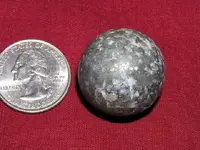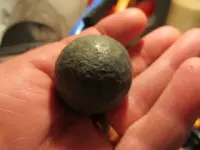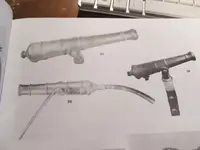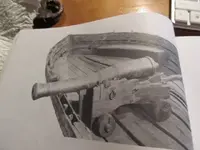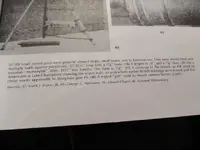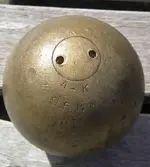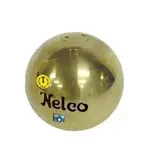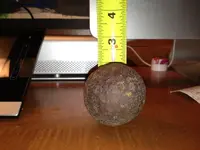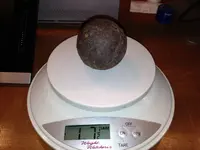As my posting-nickname implies, cannonballs are my specialty. To help you know with certainty whether your mystery-ball is any type of cannonball, or not, there are some questions about it which need specific answers.
You say your mystery-ball is made of steel. How did you determine that's what the metal is? If it is steel, it is definitely not a cannonball, because no cannonballs were made of steel.
If it is made of cast-iron, or of steel, I would assume it came out of the ground with a lot of rust or similar iron-based oxidation on it. Has it been cleaned, and if so, how? I'm asking because in its current condition, with some white-ish pitting showing on its surface, it doesn't look like either iron or steel. Instead, it currently
looks like zinc or a zinc alloy.
In addition to answers to all the questions above, extra-precise diamter and weight measurements are needed ...because those measurements for every cannonball (and grapeshot-ball) used in America are well-documented in Historical records. For example, go here:
www.civilwarartillery.com/shottables.htm
If your mystery-ball's extra-precise size and weight don't match up with that data, the ball is not a cannonball.
By the way... I'm sure it is not a grapeshot-ball, because even the smallest caliber of grapeshot ball was larger than your mystery-ball.



